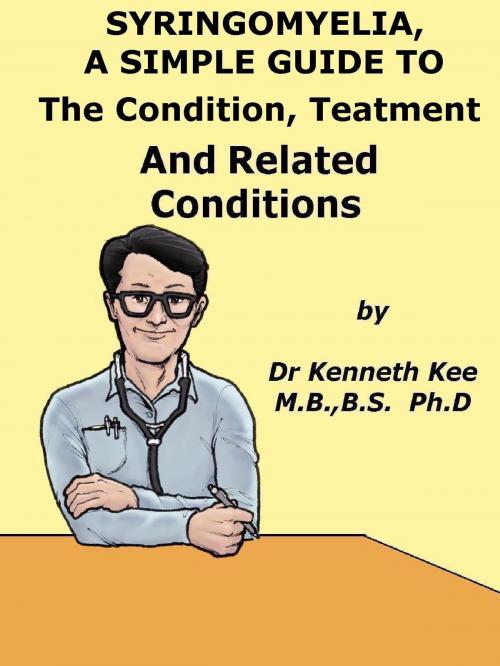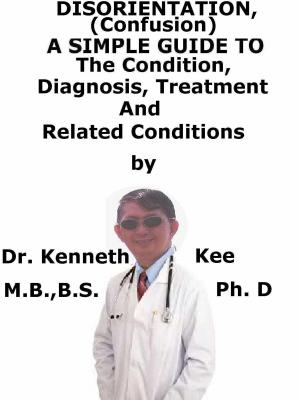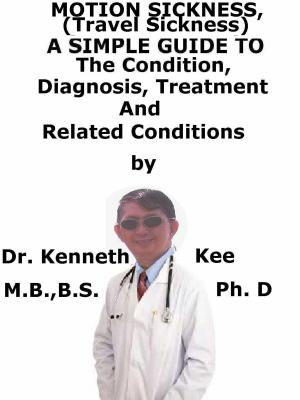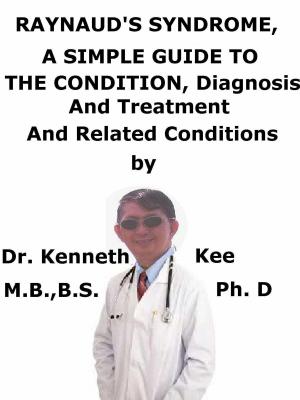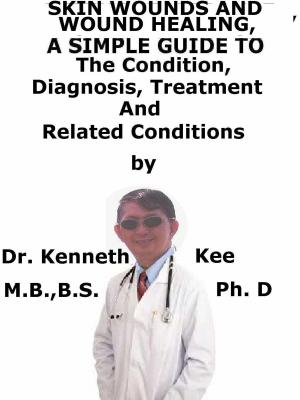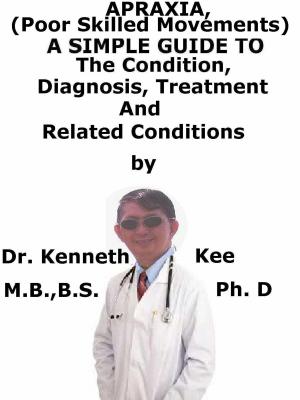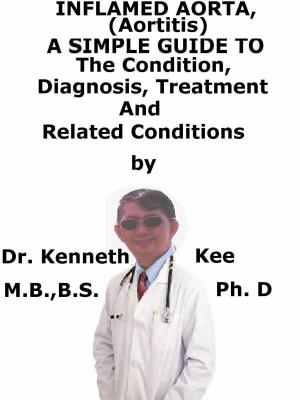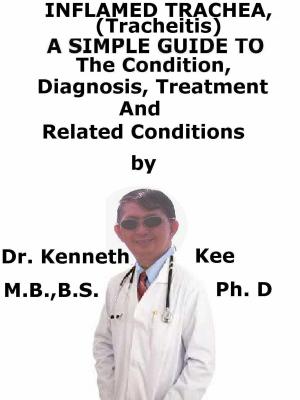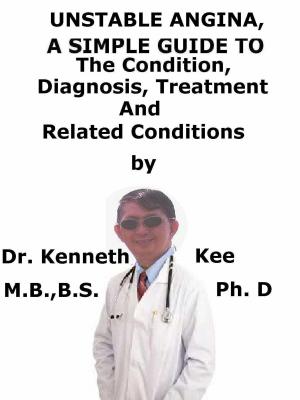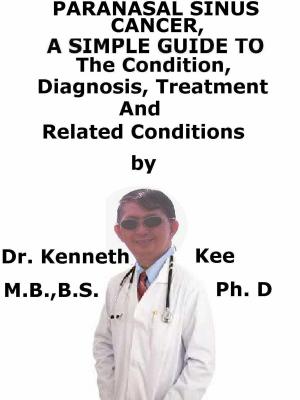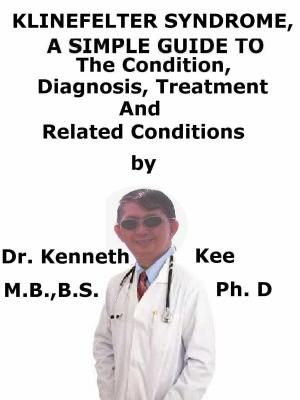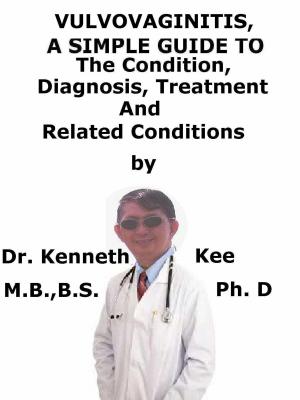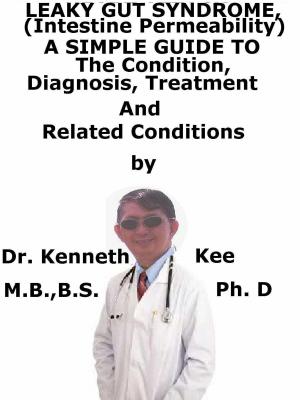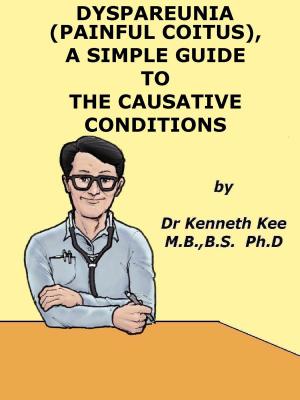Syringomyelia, A Simple Guide To The Condition, Treatment And Related Diseases
Nonfiction, Health & Well Being, Health, Ailments & Diseases, Nervous System & the Brain, Medical, Specialties, Internal Medicine, Neurology| Author: | Kenneth Kee | ISBN: | 9781311435750 |
| Publisher: | Kenneth Kee | Publication: | December 22, 2014 |
| Imprint: | Smashwords Edition | Language: | English |
| Author: | Kenneth Kee |
| ISBN: | 9781311435750 |
| Publisher: | Kenneth Kee |
| Publication: | December 22, 2014 |
| Imprint: | Smashwords Edition |
| Language: | English |
Syringomyelia is a disorder in which a cyst forms within the spinal cord
This cyst called a syrinx puts pressure on the spinal tissues and nerve blocks
Damage to the spinal cord often leads to progressive weakness
In the back, shoulders, and extremities, syringomyelia can cause stiffness.
Congenital cause is due to a brain abnormality called an Arnold–Chiari malformation
Acquired syringomyelia occurs as a traumatic, meningitic, hemorrhagic complication
Symptoms include pain, numbness, weakness, and temperature disruption
Syringomyelia can also adversely affect bowel, bladder and sexual function
Diagnosis of syringomyelia is now by (MRI) magnetic resonance imaging,
The first step after diagnosis is finding a neurosurgeon for removing the syrinx.
Surgery results in stabilization or modest improvement in symptom.
Draining syrinx fluid uses a shunt of CSF from the brain to the abdomen.
-An original poem by Kenneth Kee
Interesting Tips about the Syringomyelia
A Healthy Lifestyle
-
Take a well Balanced Diet
-
Treatment of Syringomyelia:
Surgery is usually recommended for individuals with syringomyelia.
The type of surgery and its location depend on the type of syringomyelia.
In Chiari malformation, the main goal of surgery is to provide more space at the base of the skull and upper neck without entering the brain or spinal cord.
This results in the primary cyst becoming much smaller
Surgery results in stabilization or modest improvement in symptoms for most individuals with Chiari malformation.
Delay in treatment may result in irreversible spinal cord injury.
Recurrence of syringomyelia after surgery may make additional operations necessary; these may not be completely successful over the long term.
In some individuals it may be necessary to drain the syrinx, which can be accomplished using a catheter, drainage tubes, and valves.
This system is known as a shunt.
Shunts are used in both the communicating and non-communicating forms of the disorder.
First, the surgeon must locate the syrinx.
Then, the shunt is placed into it with the other end draining the syrinx fluid into a cavity, usually the abdomen.
This type of shunt is called a syringoperitoneal shunt.
A shunt of CSF from the brain to the abdomen is called a ventriculoperitoneal shunt and is used in cases involving hydrocephalus.
By draining syrinx fluid or CSF, a shunt can halt the progression of symptoms and relieve pain, headache, and tightness.
- Keep bones and body strong
Bone marrow produces our blood
Eat foods rich in calcium like yogurt, cheese, milk, and dark green vegetables.
Eat foods rich in Vitamin D, like eggs, fatty fish, cereal, and fortified milk.
Eat food rich in Vitamins B and C such as green vegetables and fruits
Zinc and other minerals are important to the body
- Get enough rest and Sleep
Avoid stress and tension
- Exercise and stay active.
It is best to do weight-bearing exercise such as walking, jogging, stair climbing, dancing, or lifting weights for 2½ hours a week.
One way to do this is to be active 30 minutes a day at least 5 days a week.
Begin slowly especially if a person has not been active.
- Do not drink more than 2 alcohol drinks a day for a man or 1 alcohol drink a day for a woman.
Alcohol can affect the neurons and brain cells.
- Stop or do not begin smoking.
It also interferes with blood supply and healing.
Chapter 1
What is syringomyelia?
Syringomyelia is a disorder in which a cyst forms within the spinal cord.
This cyst called a syrinx expands and elongates over time, destroying a portion of the spinal cord from its center and expanding outward.
As a syrinx widens it compresses and injures nerve fibers that carry information from the brain to the extremities.
Damage to the spinal cord often leads to progressive weakness in the arms and legs, stiffness in the back, shoulders, arms, or legs and chronic severe pain.
Syringomyelia is a disorder in which a cyst forms within the spinal cord
This cyst called a syrinx puts pressure on the spinal tissues and nerve blocks
Damage to the spinal cord often leads to progressive weakness
In the back, shoulders, and extremities, syringomyelia can cause stiffness.
Congenital cause is due to a brain abnormality called an Arnold–Chiari malformation
Acquired syringomyelia occurs as a traumatic, meningitic, hemorrhagic complication
Symptoms include pain, numbness, weakness, and temperature disruption
Syringomyelia can also adversely affect bowel, bladder and sexual function
Diagnosis of syringomyelia is now by (MRI) magnetic resonance imaging,
The first step after diagnosis is finding a neurosurgeon for removing the syrinx.
Surgery results in stabilization or modest improvement in symptom.
Draining syrinx fluid uses a shunt of CSF from the brain to the abdomen.
-An original poem by Kenneth Kee
Interesting Tips about the Syringomyelia
A Healthy Lifestyle
-
Take a well Balanced Diet
-
Treatment of Syringomyelia:
Surgery is usually recommended for individuals with syringomyelia.
The type of surgery and its location depend on the type of syringomyelia.
In Chiari malformation, the main goal of surgery is to provide more space at the base of the skull and upper neck without entering the brain or spinal cord.
This results in the primary cyst becoming much smaller
Surgery results in stabilization or modest improvement in symptoms for most individuals with Chiari malformation.
Delay in treatment may result in irreversible spinal cord injury.
Recurrence of syringomyelia after surgery may make additional operations necessary; these may not be completely successful over the long term.
In some individuals it may be necessary to drain the syrinx, which can be accomplished using a catheter, drainage tubes, and valves.
This system is known as a shunt.
Shunts are used in both the communicating and non-communicating forms of the disorder.
First, the surgeon must locate the syrinx.
Then, the shunt is placed into it with the other end draining the syrinx fluid into a cavity, usually the abdomen.
This type of shunt is called a syringoperitoneal shunt.
A shunt of CSF from the brain to the abdomen is called a ventriculoperitoneal shunt and is used in cases involving hydrocephalus.
By draining syrinx fluid or CSF, a shunt can halt the progression of symptoms and relieve pain, headache, and tightness.
- Keep bones and body strong
Bone marrow produces our blood
Eat foods rich in calcium like yogurt, cheese, milk, and dark green vegetables.
Eat foods rich in Vitamin D, like eggs, fatty fish, cereal, and fortified milk.
Eat food rich in Vitamins B and C such as green vegetables and fruits
Zinc and other minerals are important to the body
- Get enough rest and Sleep
Avoid stress and tension
- Exercise and stay active.
It is best to do weight-bearing exercise such as walking, jogging, stair climbing, dancing, or lifting weights for 2½ hours a week.
One way to do this is to be active 30 minutes a day at least 5 days a week.
Begin slowly especially if a person has not been active.
- Do not drink more than 2 alcohol drinks a day for a man or 1 alcohol drink a day for a woman.
Alcohol can affect the neurons and brain cells.
- Stop or do not begin smoking.
It also interferes with blood supply and healing.
Chapter 1
What is syringomyelia?
Syringomyelia is a disorder in which a cyst forms within the spinal cord.
This cyst called a syrinx expands and elongates over time, destroying a portion of the spinal cord from its center and expanding outward.
As a syrinx widens it compresses and injures nerve fibers that carry information from the brain to the extremities.
Damage to the spinal cord often leads to progressive weakness in the arms and legs, stiffness in the back, shoulders, arms, or legs and chronic severe pain.
